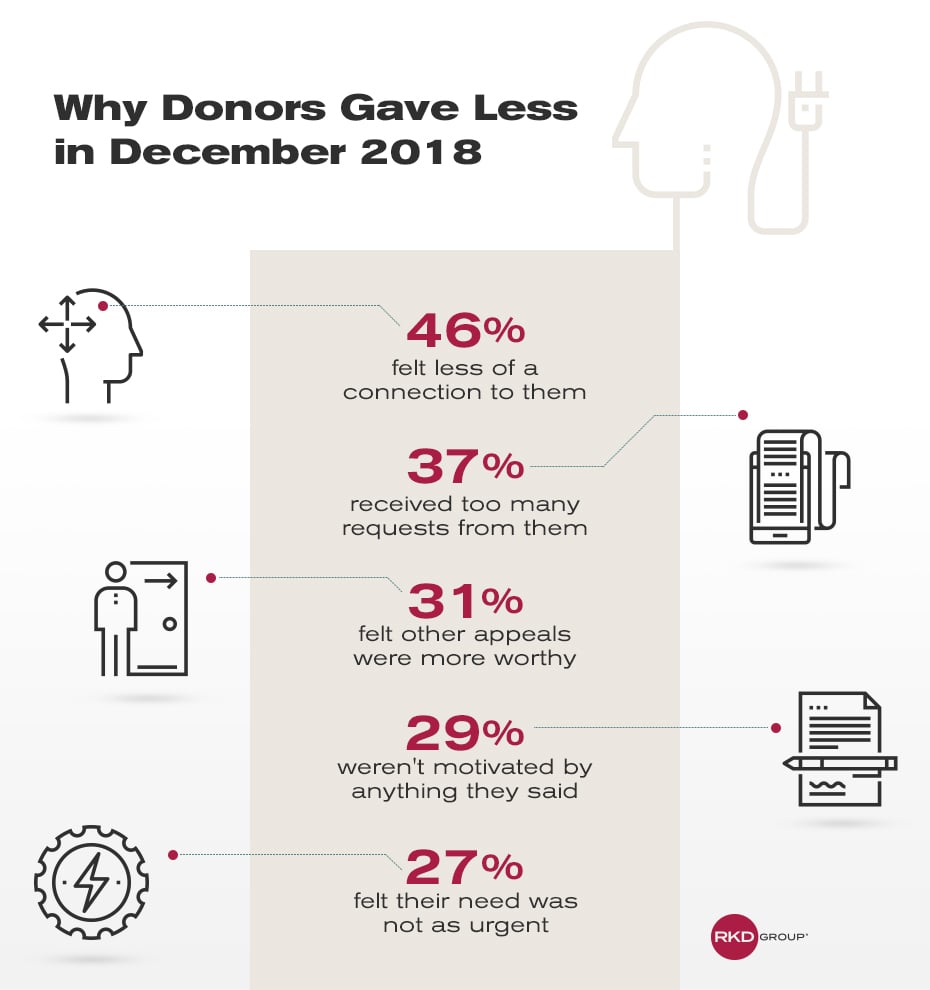46% of donors report that a lack of connection would cause them to give less to a nonprofit*. This was confirmed in our recent whitepaper. It revealed a handful of reasons why donors would give less to a nonprofit, and many of them are rooted in lack of connection.

What do we do with these results? The answer is simple, but complex: build an authentic connection to your donors. It’s important to maintain a strong understanding of, and connection with, their beliefs and motivations.
Connection. What the heck is connection, anyway?
Let’s take the buzzworthiness out of the word for a moment and consider the relationship between a person and an organization they support. The characteristics of a person’s relationship to an organization they support can, in many ways, mirror other relationships. Emily Esfahani Smith’s 2014 article in The Atlantic chronicles the patterns and characteristics of lasting relationships, among them, kindness and generosity.
Relationships are reciprocal. At least, the good ones are, both parties bringing something of value, or, as Smith puts it, kindness.
The challenge for nonprofit marketers is to identify how to build rapport with donors that sews kindness and generosity into both sides of the relationship.
How do you do that? Go back to the fundamentals of direct response marketing:
1.) Make Your Message Meaningful
Donors reported they receive too many requests from organizations. This is a problem of quality not quantity. There’s a key difference between asking for donations and reaching out to nurture a relationship that motivates donors to give. As you reach out to donors, don’t bombard them with generic requests. Rather, make your asks meaningful and thoughtful, with a main intention of stoking your relationship.
2.) Build Strategies Based on Your Donor’s POV
Many donors expressed that some appeals felt worthier of their donations than others. Why could this be? Your appeals were just as urgent and important as the rest; why were donors biting their bait and not yours? Most likely, it’s because other organizations created more personalized appeals that connect with donors. They made the donor the main focus. A potential solution to this challenge is learning more about your donors so that you can understand them. In other words, listen. Research, surveys and social media monitoring can help.
3.) Motivate Your Donors
31% of donors who gave less in December 2018 felt less motivated to give. Motivation can’t simply be created for people—they are already naturally motivated. Nonprofit marketers need to discover what it is that motivates donors, then lean in. This also starts with listening, but then pairing the findings of your listening exercise with your need. Remember, relationships/connection are a two-way thing. Learn what drives and appeals to your donors. Personalize these marketing efforts so it feels like you are talking with them, not at them.
4.) Use Emotional Marketing to Tell Your Story
After listening, a huge step to connection with a donor is through storytelling. Doing this correctly, you won’t simply be telling the story, you’ll pull them in as you make them the main character. Julia Campbell, a guest in season one of the Groupthinkers podcast discussed the importance of rising above the competition by using a different narrative to spark interest and creativity. Elements like interactive storytelling and authenticity offer a behind-the-scenes look at your needs as a nonprofit. Be real and tell real stories, and your appeals will stand out.
5.) Thank You Goes a Long Way
If you don’t do anything new this year, try three new ways to thank people who give to you. You can get closer to this by sincerely thanking the donor. Better yet, personalize your thank you. Send the thank you from your organization’s director or by crafting a “handwritten” letter. People want to feel like their donation went to a cause they care about. An optimized thank you can be that reassurance they need to notify them that their gift did indeed help a specific cause, which can motivate them to give again.
Connection is all about being a good steward of the relationship.
If you’re searching for ways to make your message more authentic, relevant and connected, we suggest you take a step back and listen. Understand that donors are people, and people have needs. As an organization, you can meet those needs (even with marketing) by being more personalized and thoughtful about your communication.
*Source: Holidazed: The Myth and Reality Behind Giving in December 2018





Leave a comment: